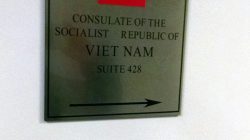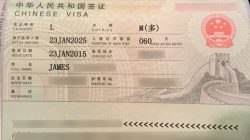Vietnam tourist visas have become more expensive as Vietnam has stopped issuing one month and three month, single entry tourist visas for US citizens. All tourist visas for US citizens to Vietnam will now be one year, multiple entry visas. This new rule went into effect on August 29, 2016.
There are two ways of obtaining a tourist visa for Vietnam and this new rule will really affect those going the second route. The first way is the traditional route of obtaining a tourist visa prior to travel at your local Vietnamese Embassy/Consulate Office. The positive to this route is you will get the visa stamp in your passport prior to travel and there will be no issues upon your arrival into Vietnam. The negative to this route is you do have to send your passport to the Vietnamese Embassy/Consulate Office for them to stamp it and risk losing your passport in the mail.
The second way is to obtain a tourist visa on arrival (with a prior letter of visa approval). This new visa change will really affect people who have elected to go this route as IT DOES NOT MATTER WHEN YOU GOT YOUR VISA APPROVAL LETTER. If your travel to Vietnam is after August 29, 2016, your visa application will automatically be changed to a one year, multiple entry visa at a cost of $135 USD. This makes Vietnam one of the more expensive countries to visit. To compare, other expensive tourist visas include Brazil at $140 (5 year visa) and China at $160 (10 year visa).
This new information was provided to me by the Customs and Immigration officials in Vietnam at Ho Chi Minh Airport (SGN). The information provided was that Vietnam no longer issues one month or three month, single entry visas. All visas for US citizens will now be one year, multiple entry visas. These new tourist visas will allow you to stay up to three months per entry.
My friend and I recently went to Vietnam on September 2, 2016 and learned of this new information. Being the paranoid person that I am, I obtained my tourist visa prior to arrival so it did not affect me but my friend decided to not part with his passport and obtained a visa on arrival instead. He used an online travel agency to obtain his visa approval letter in the beginning of August 2016. His one month, single entry tourist visa was approved and he obtained his letter of visa approval on August 15, 2016.
The cost of the online visa service was $10 and the expected cost for the one month, single entry visa stamp upon arrival was supposed to be $25. However, upon arriving into SGN, my friend went to the Visa on Arrival (Landing Visa) Office and was informed of the new information. His one month, single entry visa stamp at $25 was changed to a one year, multiple entry visa at $135 USD, payable in cash only. This was also confirmed by several other Americans we met during our time in Vietnam who also encountered the same situation with the prior letter of visa approval.
Thanks to reader Kristine, the information above has been CONFIRMED! According to the Vietnamese San Francisco Consulate Office:
“Under a new reciprocal agreement between the Vietnamese and American governments, since August 29, 2016, the Vietnamese government has issued multiple-entry visas valid to one year to US passport holders entering Vietnam with the following purposes: tourism, conferences, working with organizations and enterprises in Vietnam, and other purposes, and meeting legal requirements under Vietnamese immigration laws. The Consulate General of Vietnam in San Francisco will only issue 12 month multiple-entry visas to US citizens; one-month and 3 month visas are no longer valid.”
This is not good new as it effectively makes Vietnam so expensive to visit now. It kills me when governments roll out such sweeping changes that affect so many people yet are so slow to communicate and inform the public about the changes (the price boards indicating the now obsolete visas and prices are still displayed at the landing visa offices). Has anyone else had the same problem upon arriving into Vietnam? Please let me know in the comments section below.
The other related posts in this series include:





